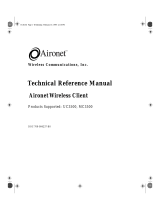
DescriptionWarning Title
Tämä varoitusmerkki merkitsee vaaraa. Olet tilanteessa, joka voi johtaa
ruumiinvammaan. Ennen kuin työskentelet minkään laitteiston parissa, ota selvää
sähkökytkentöihin liittyvistä vaaroista ja tavanomaisista onnettomuuksien
ehkäisykeinoista. (Tässä julkaisussa esiintyvien varoitusten käännökset löydät
liitteestä "Translated Safety Warnings" (käännetyt turvallisuutta koskevat
varoitukset).)
Varoitus
Ce symbole d'avertissement indique un danger. Vous vous trouvez dans une
situation pouvant entraîner des blessures. Avant d'accéder à cet équipement,
soyez conscient des dangers posés par les circuits électriques et familiarisez-vous
avec les procédures courantes de prévention des accidents. Pour obtenir les
traductions des mises en garde figurant dans cette publication, veuillez consulter
l'annexe intitulée « Translated Safety Warnings » (Traduction des avis de sécurité).
Attention
Dieses Warnsymbol bedeutet Gefahr. Sie befinden sich in einer Situation, die
zu einer Körperverletzung führen könnte. Bevor Sie mit der Arbeit an irgendeinem
Gerät beginnen, seien Sie sich der mit elektrischen Stromkreisen verbundenen
Gefahren und der Standardpraktiken zur Vermeidung von Unfällen bewußt.
(Übersetzungen der in dieser Veröffentlichung enthaltenen Warnhinweise finden
Sie im Anhang mit dem Titel "Translated Safety Warnings" (Übersetzung der
Warnhinweise).)
Warnung
Questo simbolo di avvertenza indica un pericolo. Si è in una situazione che può
causare infortuni. Prima di lavorare su qualsiasi apparecchiatura, occorre
conoscere i pericoli relativi ai circuiti elettrici ed essere al corrente delle pratiche
standard per la prevenzione di incidenti. La traduzione delle avvertenze riportate
in questa pubblicazione si trova nell'appendice, "Translated Safety Warnings"
(Traduzione delle avvertenze di sicurezza).
Avvertenza
Dette varselsymbolet betyr fare. Du befinner deg i en situasjon som kan føre til
personskade. Før du utfører arbeid på utstyr, må du være oppmerksom på de
faremomentene som elektriske kretser innebærer, samt gjøre deg kjent med vanlig
praksis når det gjelder å unngå ulykker. (Hvis du vil se oversettelser av de
advarslene som finnes i denne publikasjonen, kan du se i vedlegget "Translated
Safety Warnings" [Oversatte sikkerhetsadvarsler].)
Advarsel
Este símbolo de aviso indica perigo. Encontra-se numa situação que lhe poderá
causar danos fisicos. Antes de começar a trabalhar com qualquer equipamento,
familiarize-se com os perigos relacionados com circuitos eléctricos, e com
quaisquer práticas comuns que possam prevenir possíveis acidentes. (Para ver
as traduções dos avisos que constam desta publicação, consulte o apêndice
"Translated Safety Warnings" - "Traduções dos Avisos de Segurança").
Aviso
Este símbolo de aviso significa peligro. Existe riesgo para su integridad física.
Antes de manipular cualquier equipo, considerar los riesgos que entraña la
corriente eléctrica y familiarizarse con los procedimientos estándar de prevención
de accidentes. (Para ver traducciones de las advertencias que aparecen en esta
publicación, consultar el apéndice titulado "Translated Safety Warnings.")
¡Advertencia!
Cisco Wireless Mesh Access Points, Design and Deployment Guide, Release 7.4
xiv OL-28135-01
Preface
Conventions




















